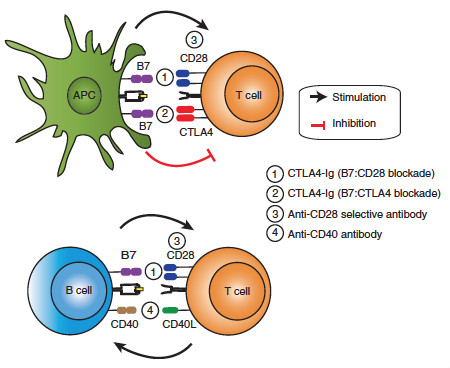INTRODUCTION:
The concern about nephrotoxicity with calcineurin inhibitors led to the search of novel agents for immunosuppression. Based on the requirement of T-cell co-stimulatory signals to fully activated naïve T cells, it became clear that blocking these pathways could be an appealing therapeutic target. However, some unexpected findings were noticed in the recent clinical trials of belatacept, including a higher rate of rejection, which warranted further investigation with some interesting concepts emerging from the bench.
AREAS COVERED:
This article aims to review the literature of the B7:CD28 co-stimulatory blockade in transplantation, including the basic immunology behind its development, clinical application and potential limitations.
EXPERT OPINION:
Targeting co-stimulatory pathways were found to be much more complex than initially anticipated due to the interplay between not only various co-stimulatory pathways but also various co-inhibitory ones. In addition, co-stimulatory signals have different roles in diverse immune cell types. Therefore, targeting CD28 ligands with cytotoxic T lymphocyte antigen-4 (CTLA4)-Ig may have some deleterious effects, including the inhibition of regulatory T cells, blockade of co-inhibitory signals (CTLA4) and promotion of Th17 cells. Co-stimulatory independence of memory T cells was another unforeseen limitation. Learning how to better integrate co-stimulatory targeting with other immunosuppressive agents will be critical for the improvement of long-term graft survival.
T-cell co-stimulatory blockade in transplantation: two steps forward one step back!
Riella LV, Sayegh MH.
Expert Opin Biol Ther. 2013 Nov;13(11):1557-68.

